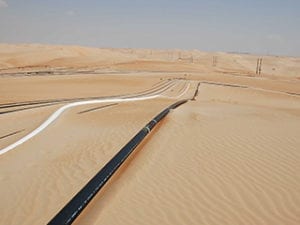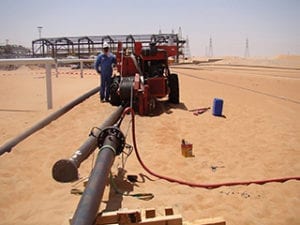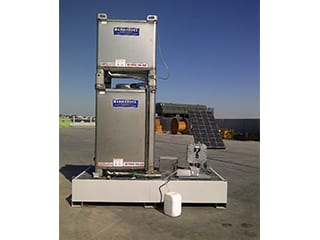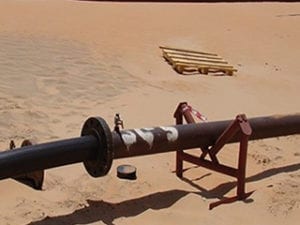The next article in this series from Fellows of ICorr who have made a significant contribution in the field of corrosion control is by Ali N Moosavi, a Project Manager with DNV-GL, who describes his personal experience with the use of pipeline liners by a major Oil and Gas company in the Middle East.
Protection of pipeline internal
surfaces, and the use liners in the Oil and Gas Industry
The owners and operators of pipelines in the oil and gas industry have a range of options available to them for the internal protection of their pipelines from corrosion. These include from doing nothing, to cleaning, using coatings, chemicals and internal liners.
Do Nothing
This option is used where:
• Expected life of the line is too short to require any protection
• Corrosivity of the liquid passing through the line is insignificant
• Economics dictate repair and replace strategy
Use Cleaning Pigs
This is a very effective method but is labour intensive and requires the lines to be piggable. It is particularly effective in lines where the main mode of corrosion is Under Deposit Corrosion, or Microbially Influenced Corrosion (MIC), which normally occurs at the 6 o’clock position.
Internal Coating
This option can be very effective but requires a very high degree of quality control and quality assurance at the application stage. Also, assuring that the coating coverage of the weld joints is undamaged is challenging. There is also some concern that any holidays in the coating can result in accelerated localised corrosion at the exposed location. Furthermore, detachment of coating on a widescale basis can lead to a blockage of the pipeline.
Anti-Corrosion Chemicals
This is a widely used method in the oil and gas industry. It requires chemical injection facilities and also that operators ensure that a minimum level of chemicals is maintained in the tank and the injection pumps are working. Often a cocktail of chemicals, such as corrosion inhibitor, oxygen scavenger, biocide, etc. is required. In the warmer climate of Middle Eastern countries, solar powered automatic chemical injections systems, with automatic warning if the tank runs low, are increasingly being used.
Cladding
Internal cladding of pipelines with between 1-3 mm of a corrosion-resistant alloy (CRA) material is only used where corrosivity is high, the line is critical, and a relatively long design life is required. It is relatively expensive and is rarely used for very long pipelines. It has the advantage of being a “fit and forget” measure with no further activities required from operators, and no need for any other internal corrosion control measures, such as chemical inhibition. It is also much more reliable than internal coating or liners.
Corrosion Resistant Alloys (CRA) for pipeline material
This option is by far the costliest option and its use is extremely rare, especially for lines of any considerable length. To economically justify this option would require an extremely critical line with severe threats of both internal and external corrosion, and it would be for a very short length. However, this option is used more commonly for downhole casing and tubing in extremely corrosive conditions, as the cost of any workover due to corrosion of downhole equipment is very high.
Non-metallic Pipelines
Various non-metallic materials are used for construction of pipelines. These range from Poly Vinyl Chloride (PVC) to Glass Reinforced Epoxy (GRE). The use and selection of the specific non-metallic material for a pipeline depends on the maximum pressure and temperature of the operating environment, and the temperature/pressure limitations of the pipeline material. The vast majority of non-metallic pipes are used to transport water. With advances in the technology of these pipelines, more resilient forms of non-metallic lines, such as High-Density Polyethylene (HDPE) and GRE, have been used to transport crude oil. Basically, the smaller the pipeline diameter, the higher its limits for pressure and temperature. These lines offer internal and external corrosion resistance and do not require any additional corrosion protection measures such as chemical inhibition. They are unlikely to need cleaning by pigs as deposits cannot adhere easily to non-metallics. Such pipelines can be “rolled on” the ground.
However, non-metallic pipelines installed in moving soil conditions, such as deserts, can suffer from vibration and become deformed. They also must be resistant to solar radiation.
 A non-metallic pipeline (white) rolled on the desert floor.
A non-metallic pipeline (white) rolled on the desert floor.
 The wireline machine used for pulling a liner through the host pipeline.
The wireline machine used for pulling a liner through the host pipeline.



